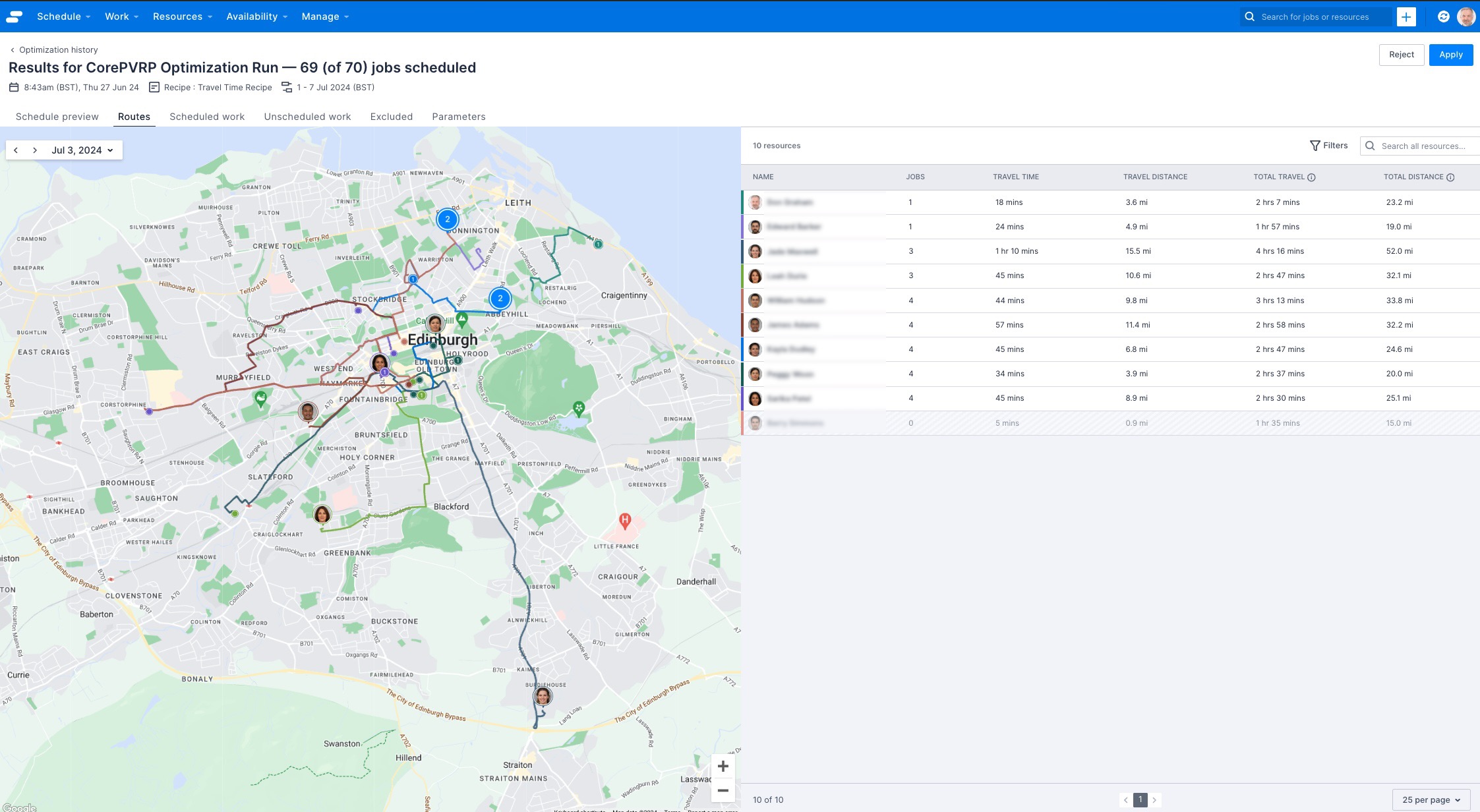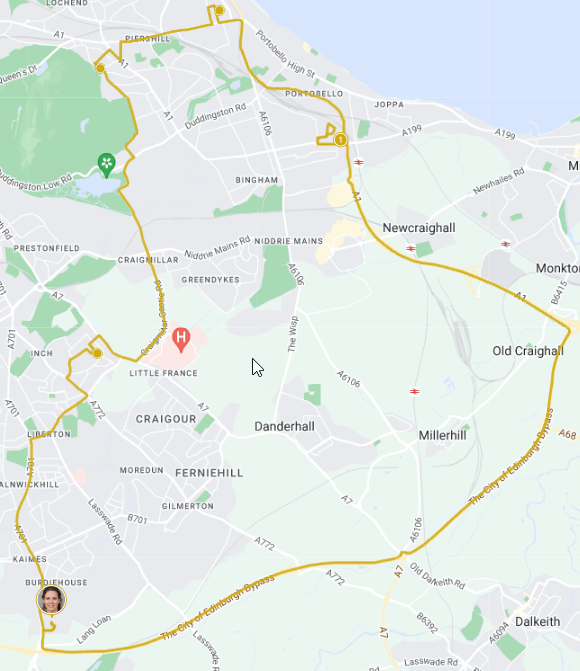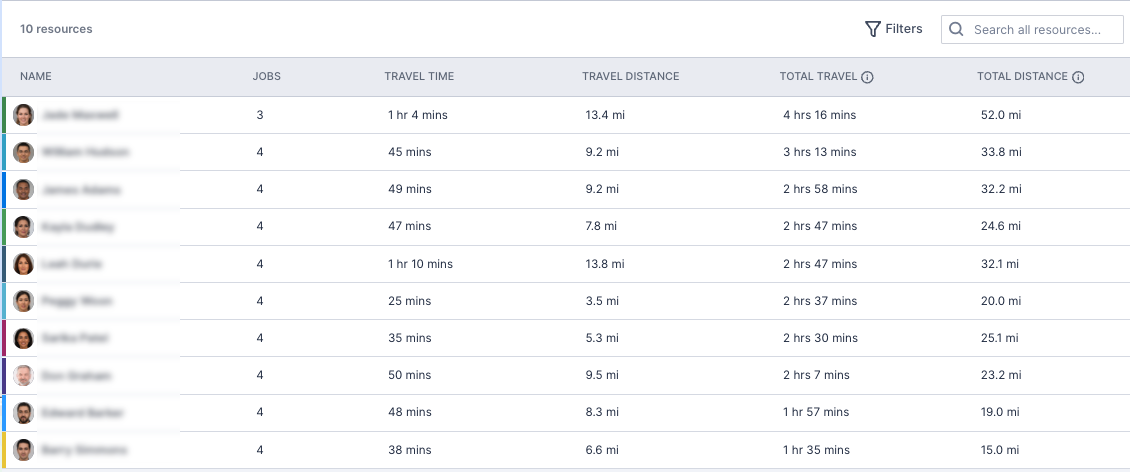Optimization results
Overview
The Results page provides a summary of an optimization run, which helps schedulers to understand the details of the optimization run, such as average work time, travel time, and distance traveled in relation to the overall schedule.
Results pages are available from both the Background tasks button and the Optimization history page.
Finding the optimization results page
Optimization results are shown for each optimization run, including both one-off and scheduled optimization runs.
For one-off optimization, you can click Ready to view results in the Background tasks menu to view the results page of any optimization run from the past seven days.
Schedule preview
The Schedule preview tab is the default tab of the Optimization results page, and appears as follows:

Schedulers can apply or reject the results from the Schedule preview tab.
- If the results are rejected, they cannot be applied to the schedule later, but they can still be viewed from the Optimization history page.
- If the results are accepted, they are applied to the schedule and can be viewed on the swimlanes.
Note
Job cards cannot be moved on the Schedule preview swimlane. To make minor changes to the schedule, schedulers can apply the schedule and make adjustments from the swimlanes under Schedule on the global navigation bar.Routes
The Routes shows a day-by-day view of their allocations plotted on a map with the suggested routes they may make as they travel and undertake their allocated work.

The default view shows the first day of the schedule window. Move between any date within the schedule window using the date picker.

Each resource scheduled to work for the selected day will appear on the map. Resources are represented by their personal avatars, which are placed on their home address.
Work allocations are represented by small nodes that are placed on the road outside the address given. The node that represents the resource’s first allocation of the day is labeled with a 1.
Hover the cursor over an avatar or node to display more information.

The table to the right of the map displays a summary of the selected day in terms of the number of jobs undertaken, the travel time, and the distance traveled along with the total travel and distance for the whole schedule window optimized.

Scheduled work
Jobs that were scheduled in the optimization run are listed with their job number and type, start times, and allocated resources.
Unscheduled work
Jobs that were unscheduled during the run are listed with the reason that the job was unscheduled.
There are a number of reasons why a job may have been unscheduled. See Unscheduled reasons, below, for the full list of reasons a job may have been unscheduled.
Unscheduled reasons
Jobs that remain unscheduled after the optimization run are listed in the Unscheduled tab of the Details page.
Unscheduled reasons fall into two categories – job reasons and resource reasons.
Job reasons are non-resource specific, such as job time constraints.
Resource reasons are resource specific, such as having a missing skills or resource tag. All resource reasons will have a resourceId associated with them.
| Reason | Reason template |
|---|---|
| Resource has exhausted availability (no time constraint or job time constraint is within their availability window) | Resource <Resource.Name> does not have enough availability to be allocated to the job. |
| Resource has for no availability in job time constraint window | Resource <Resource.Name> does not have availability for the window(s) of time the job can be scheduled in. |
| Resource is missing critical skills to do the job | Resource <Resource.Name> is missing the following required skill tags: <Tag.Name> |
| Resource is blacklisted or not whitelisted from the account (and a whitelist exists) | Resource Resource |
| Resource is blacklisted or not whitelisted from the location (and a whitelist exists) | Resource Resource |
Excluded work
Excluded jobs are those that cannot be considered in the optimization problem.
This can be for a number of reasons, the most common being that they were out of scope of the run, for example the start date of the job was not within the scheduling window.
Excluded reasons
Some jobs are excluded from optimization for various reasons, usually due to job attributes or contraints that mean the solver is unable to schedule them.
| Reason | Reason template |
|---|---|
| Job is excluded | Job was excluded from the optimization scope. |
| Job time constraints mean that a job must be scheduled before the time window being optimized | Job must start before the schedule window. |
| Job time constraints mean that a job must be scheduled after the time window being optimized | Job must start after the schedule window. |
Feedback
Was this page helpful?